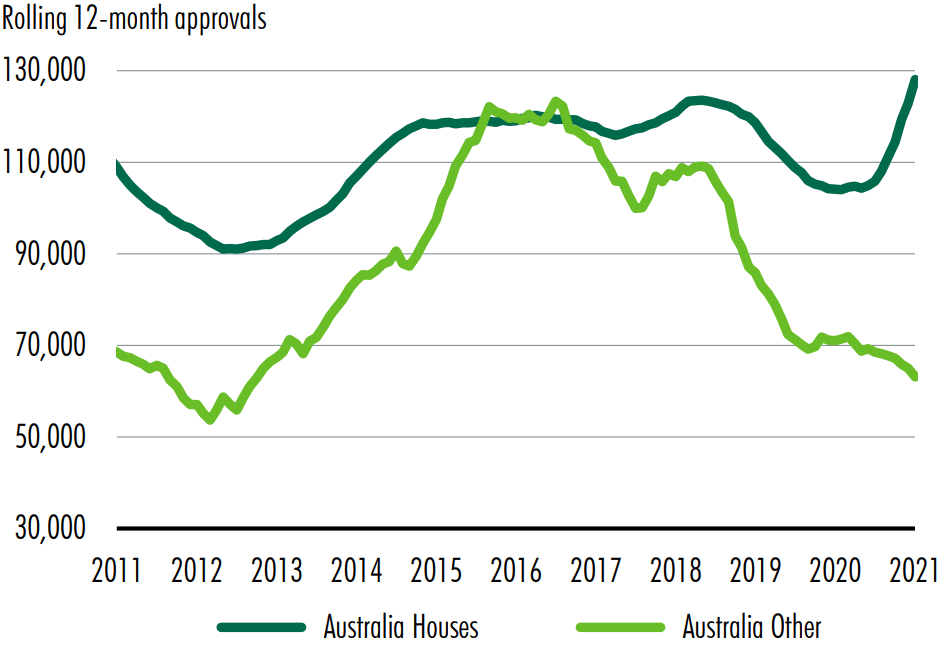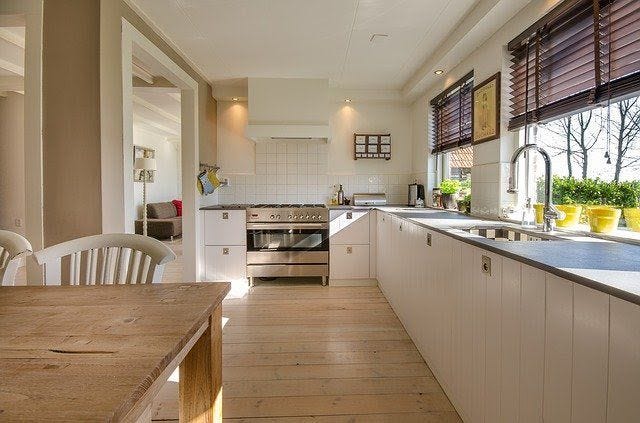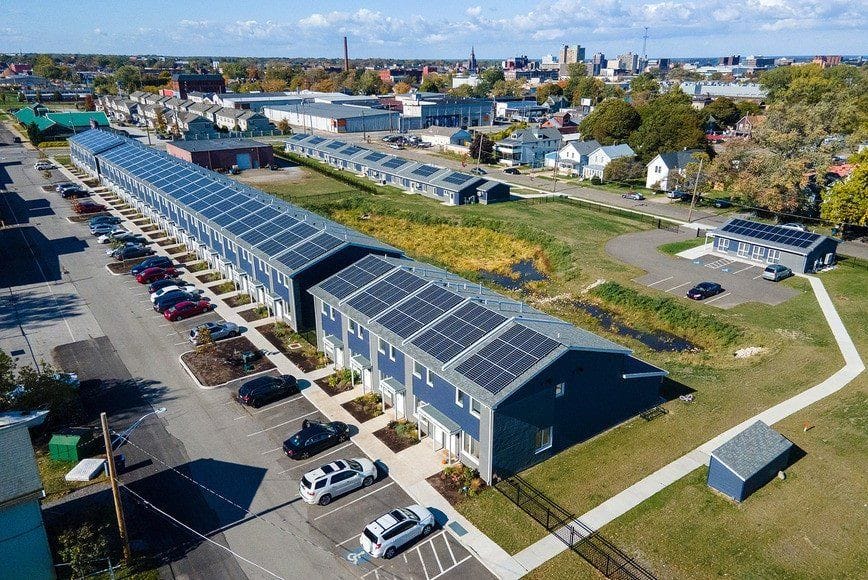Heat, health, and homes
This issue was originally sent as email newsletter on 8th July 2021.Hi all,
Welcome back to The Long Game—a newsletter to share our take on the stories dominating sustainability and the built environment.
A lot has happened since the last issue. But as the world picks up pace again, we need to pause every now and then to see some of the quiet shifts taking place.
Today we'll zoom out and explore the intersection of heat and homes, along with their impacts on human health.
With that, read on...
Kelvin
THE STORY IN NUMBERS
417.21: As of 5th July 2021, the concentration of Carbon Dioxide in the atmosphere was 418.45 ppm. A year ago the concentration was 415.36 ppm. The concentration limit of the UNFCCC Paris Agreement is 430 ppm (for 1.5°C global warming) and 450 ppm (for 2°C).
2.68: With 2.68 million rooftop solar power systems installed across Australia, we now have the highest uptake of solar globally.
950: ANZ bank pulled out of funding the largest thermal coal terminal in the world—choosing to divest a whopping $950 million. Why? Because "It will absolutely end up a stranded asset if the world is able to deliver on the Paris Climate agreement", stated Tim Buckley, from the Institute for Energy Economics and Financial Analysis. The port exported 160 million tonnes of coal in 2020.
53: UNESCO recommended adding Australia's Great Barrier Reef to the list of 53 other World Heritage sites considered “in danger” due to rising ocean temperatures. Canberra plans to oppose the proposal.
PODCAST
Our new podcast is live on YouTube and Spotify! The Long Game was born from a yearn to learn. In the podcast, I bring you passionate practitioners and thinkers in our industry to share their insights.
I hope you enjoy the talks. Here are the first two:
Ash Mogensen, 3ARK: "Build airtight, ventilate right".
In the first episode Ash shares his deep knowledge about airtight homes, how air leaks from houses—and why this matters. Ash co-founded 3ARK, a Melbourne-based company that specialises in building performance, thermography, and building air tightness testing.
Among other practical tips, we talk about rodents, 10+ air leakage points, fresh air supply, and much more.
Darren O'Dea, Speckel: "Better quality buildings"
I've admired Darren from afar for a long while now. Especially as he smoothly transitioned from consulting into co-founding a software company—Speckel.io. So I was thrilled when we finally found time to sit down and chat about building physics and building codes—and how Speckel helps bridge the two.
We also touch on condensation risks to property owners (and builders), changes to the National Construction Code, NSW building reforms, and heaps more.
THE BIG STORY
Heat, health, and homes
If like me, curiosity may have pushed you to try and understand Australia's strategy in response to the pandemic. And ask, all things considered how did Australia manage to navigate the pandemic with comparatively lower public health impacts?
The answer is complicated and layered.
But I keep circling back to one thing: The National Pandemic Preparedness Plan—dating back to 1999, with revisions in 2009, 2014 and 2019.
An entire plan laid out in case of a global pandemic.
The level of detail is intriguing. The document covers everything from 1.5 metre physical distancing, travel restrictions, quarantines, to contact tracing, to border measures, and essential services.
Plus the likely effectiveness, acceptability, and costs of implementing different measures.
The big picture
Which brings me to back to our industry, the built environment.
We’re starting to connect the dots. There’s a growing mountain of evidence showing that human health is both directly and indirectly impacted by our homes and buildings.
Health impacts range from asthma and respiratory diseases, to mortality risks after heat wave events (especially in poorly conditioned/ventilated homes). The Royal Commission into Victoria's Mental Health System report also touches on the interplay between housing, substandard accommodation, and mental health.
Today we'll focus on the effects of heat (since this is correlated to climate change effects).
What we know: Since 1910 (when official records began), the average temperatures have increased by 1.44°C in Australia. A trend that is likely continue over time.
One knock on effect of this is a disrupted climate, along with a rise in the number of days over 35 °C (and all the secondary effects that come with that e.g. strained power grids).
So how are we bracing for a warmer climate?
Up to speed
With no national strategy in sight, states, local governments, and industries are left to chart their way forward.
Let's explore what some peak industry bodies are saying:
Property Council of Australia: "Poor performing homes affect not only Australians’ health and comfort, but they also have an impact on the economy overall through increases in public health spending."—read more
Australian Building Codes Board: A more stringent residential building code (Volume 2) is set to be introduced in 2022.
Infrastructure Victoria: "Require all new homes to achieve a 7.0-star NatHERS rating (or equivalent) by 2022, increasing towards 8.0 stars by 2025, either through the National Construction Code or Victorian regulations" — Victoria's Draft 30 Year Infrastructure Strategy
Department of Human Health Services: The state government created the Heat health plan in 2020 to "help reduce the impact of extreme heat on Victorians."
Between the lines: All documents point to one thing—the need for resilient homes and buildings. It's not just an energy efficiency issue, but over time, a health matter too.
Why it matters
In simple terms, our buildings should keep heat outside in summer and keep heat inside during winter.
Here in Australia, short-term heat events (e.g. heat waves) and cold events cause more loss of life than any other weather or climate extreme.
We're also projected to see more heat extremes and fewer cold extremes over the coming decades, as per CSIRO and Bureau of Meteorology research.
As with most public health issues, the most vulnerable people include: children, the elderly, people with pre-existing medical conditions, and people living alone or who are socially isolated.
Overseas, parts of the northern hemisphere are experiencing a once in a millennium heat dome. Compelling some regions to create cooling centres or ease covid restrictions so that residents can take refuge in air conditioned malls and cinemas.
Yes, but
Heat waves and other extreme weather events have always occurred before. So will average temperatures increasing by a degree or two really make a difference?
The science on this is concrete. While we can’t predict the weather next week, let alone next month or beyond, global average temperatures are rising. Largely due to human activities.
And the temperatures are projected to rise further. A warmer atmosphere is a recipe for even less predictable weather patterns, along with more frequent and intense extreme weather events.
Even banks and insurance companies have perked up in response to the physical impacts of climate risks on the built environment, and by extension their financial positions.
As per the national Pandemic Plan: "However, it is inevitable that the world will face another influenza pandemic. While there is no certainty about where or when the next one will occur, Australia must be prepared. An influenza pandemic represents a significant risk to Australia. It has the potential to cause high levels of disease and death and disrupt our community socially and economically." (August 2019).
Looking further ahead
I'm hopeful that the same foresight and pragmatism will be adopted as we start to face the known risks posed by a rapidly changing climate—state-wide and nationally.
Raising the building code’s minimum energy efficiency requirements is a good start (more on this in a future post). Providing financing for sustainable home upgrades is noteworthy. Introducing statutory duty of care provisions in the building industry is welcome.
Next in line: Bring health and comfort to the centre stage. Indeed, Australia must be prepared.
Go deeper: Latest State of the Climate Report by CSIRO→
GRAPHIC OF THE WEEK
Home buying throughout Australia continues to surge. CoreLogic research estimates that over $31 billion was lent for property purchase in April 2021 alone. Affordability issues begin to surface as house prices reach new highs. Image from CBRE's latest market review... Residential Building Approvals, Australia—2021:

LUNCHTIME READS
Energy
Curious about how Victoria's natural gas system works? Or how we can potentially transition from natural gas to renewable sources? Or how the state government proposes to spend $1.6 billion to support renewable energy? You can help build Victoria's Gas Substitution Roadmap.
From accelerating its renewable energy economy and green neighbourhoods to coastal protection and a circular economy, South Australia is all in on building a Climate Smart economy by 2025.
Waste
The Federal Government pledged $1 billion to revolutionalise Australia's waste industry. The Recycling Modernisation Fund is also set to create 10,000 jobs, and divert over 10 million tonnes of waste from landfill over the next 10 years.
Some councils have embraced this move by introducing 2 more bins (glass and garden waste)
Public Sector
City of Brimbank aims to become the powerhouse of Melbourne's West by 2050. Explore their 30 year plan to turn Sunshine into Melbourne's western CBD and attain net zero carbon emissions.
Powerhouse Paramatta is soon to be the biggest museum in NSW. At $840 million, the world class science and technology museum is the largest investment in cultural infrastructure since the Sydney Opera House.
Other
Canberra commits to providing zero-interest loans for rooftop solar panels and sustainable home upgrades—plus free 2 year vehicle registration for new zero emission vehicles [Link]
Browse Victoria's 30 year Infrastructure Strategy. Discover how Victoria will confront long term challenges, manage urban change, develop regional Victoria and more... [PDF]
A friction I hope will resolve sooner rather than later [Link]
MAKAO MENTIONS
Who we're following this month
This month the spotlight turns to Dean Landy—find him on LinkedIn for insights on urban design and architecture.
Dean's an Architect & Partner at ClarkeHopkinsClarke. He's also the Founding Director of the non-profit One Heart Foundation.
His book, Creating Vibrant Communities, is a practical guide creating healthy, sustainable and vibrant developments.
Here's a glimpse of what to expect from him next. Worth your time.
TODAY'S BUILDING
Parade Street Commons East, by Onion Flats
Can housing be sustainable AND affordable?
Completed in 2019, the Parade Street Commons East was a development with a key focus on creating Affordable Housing. The 40 dwellings were designed and built to meet the stringent Passive House standard.
Another interesting element is that the buildings were also designed to be manufactured in a modular factory—to minimise construction time.
🔔 Just a friendly reminder that the content in this newsletter is not intended as investment or professional advice. It's always important to do your own research and consult with professionals before making any financial decisions.BEFORE YOU GO
Thank you for reading.
If you liked this issue, explore more content on our website.
And if you found it useful, forward it to a friend or colleague.
Also, let's connect on LinkedIn.
Big love,
Kelvin.






Thank you for your insightful blog on the heat, health, and homes. Your informative content sheds light on crucial issues impacting communities worldwide. Keep empowering us with your valuable knowledge!